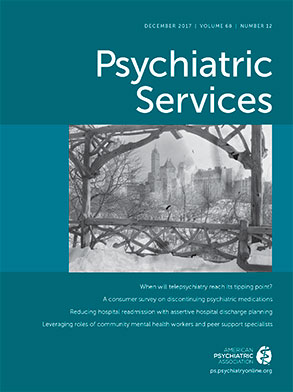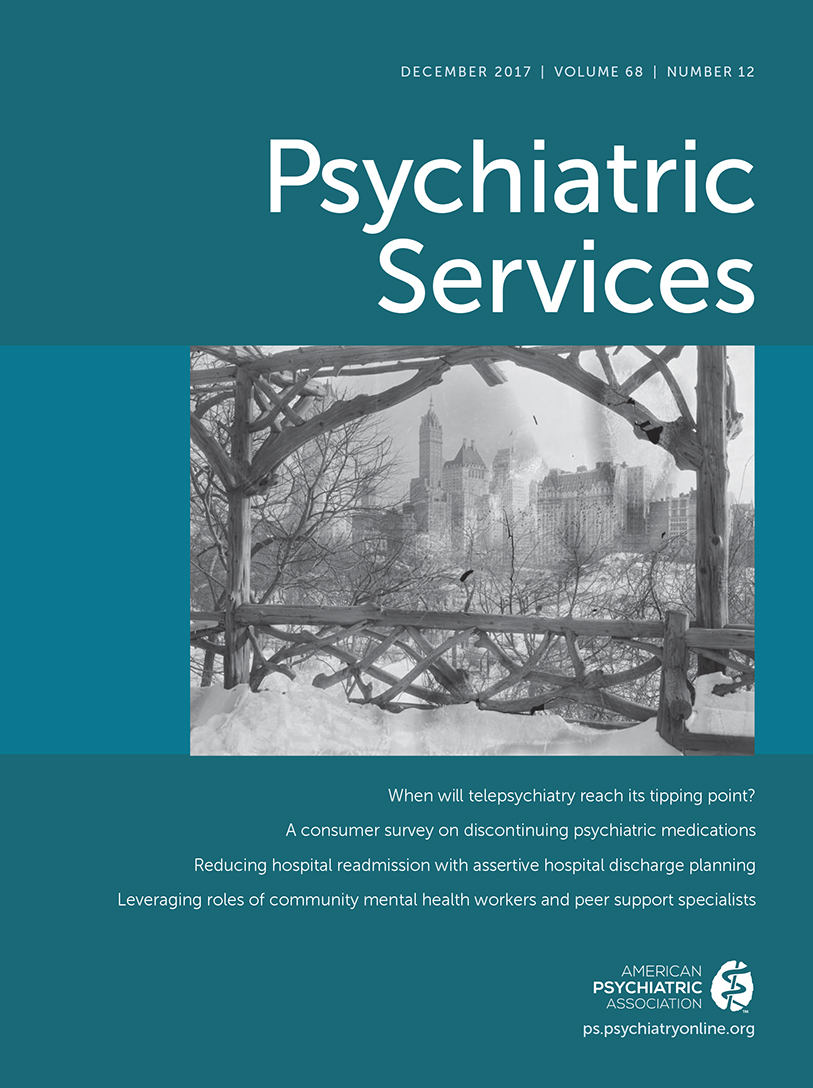Many payers are exploring new models of paying for health care in an effort to control spending growth and improve the coordination and quality of care (
1). In 2009, Blue Cross–Blue Shield of Massachusetts (BCBSMA) implemented the alternative quality contract (AQC), whereby BCBSMA pays large provider organizations a risk-adjusted global payment for all services used by a population of enrollees over a five-year period and includes bonuses (of up to 10% of the budget under initial contracts) based on 64 quality metrics. A recent evaluation of the effect of the AQC on health care for adults found that growth in overall health care spending slowed and quality of care improved relative to similar populations (
2–
4). An evaluation of the AQC in a child population found an increase in the provision of preventive care and improvements in quality metrics tied to bonuses, but no change in spending (
5).
Global payment models, such as the AQC, provide an opportunity to address fragmentation of care by incorporating mental and substance use disorder (behavioral health) services with general medical services under one integrated payment system (
6,
7). Under this type of model, primary care physicians (PCPs) play the central role in patients’ care and are typically given greater flexibility to coordinate the health of the population in their patient panels with attention to reducing the burden of disease over a longer time horizon than is typical in traditional payment models.
Attention-deficit hyperactivity disorder (ADHD) is one of the most common behavioral health diagnoses of children and adolescents, and care for ADHD is often fragmented (
8,
9). One possible implication of the AQC is that the global payment system may result in increased behavioral health service utilization as physicians invest in additional services up front to avoid costlier care downstream. Alternatively, physician groups facing a financial incentive to reduce spending could limit the intensity of services they provide, especially for conditions such as ADHD, the care of which is not tied directly to measurement-based bonuses. Because care for ADHD among youths is often treated by PCPs (
8,
9), we hypothesized that care patterns for this population might change under the AQC. Thus, our study assessed the effect of the AQC on behavioral health service use and spending and total health care spending among children with diagnosed ADHD.
Analysis of the AQC
The unit of analysis for this study was the person-calendar year. Our study cohort consisted of youths age 20 years or younger who were continuously enrolled (general medical care, behavioral health care, and pharmacy benefits for all 12 months) in a BCBSMA health maintenance organization or point-of-service plan and who had a diagnosis of ADHD during the calendar year. Individuals were required to select a PCP on plan enrollment and were considered enrolled in the AQC if their physician was part of a physician group participating in the AQC. Physician groups could choose to participate in the AQC at any point between 2009 and 2011.
We used 2006–2011 BCBSMA claims and enrollment data to examine whether AQC implementation affected use of behavioral health inpatient services, outpatient services, or psychotropic medication, as well as total health care spending, nonpharmacy spending related to mental health and substance abuse treatment, and psychotropic medication spending among children with ADHD. Behavioral health diagnoses were identified via the ICD-9-CM diagnostic codes of 290, 293–302, or 306–316, with 314.0X indicating ADHD. Utilization of behavioral health services was defined as an outpatient claim with a primary diagnosis of a mental health or substance use condition or an inpatient claim if the last primary discharge diagnosis and a majority of all primary diagnoses during the inpatient admission were behavioral health diagnoses. Outpatient behavioral health care was further classified into medication management visits, psychotherapy, and all other outpatient care. Behavioral health–related nonpharmacy spending included all spending associated with behavioral health inpatient and outpatient health care utilization as defined above, whereas total health care spending consisted of all health care spending for each person-year (PY). Psychotropic medications included all stimulants and nonstimulant ADHD medication plus other psychiatric medications, including antidepressants, antipsychotics, and antimania medications.
We used difference-in-differences models to estimate changes in behavioral health service utilization and spending attributable to implementation of the AQC. Comparisons of spending trends prior to the AQC found no significant difference between the AQC and comparison groups in total spending or behavioral health spending, suggesting that our analysis met the parallel trends assumption of the difference-in-differences study design. All analyses were conducted at the PY level. Our treatment group included PYs for which an individual’s PCP was participating in the AQC, whereas the comparison group consisted of PYs in which an individual’s PCP was not participating in the AQC. Thus, the comparison group included individuals whose PCP never participated in the AQC between 2006 and 2011 as well as individuals whose PCP would go on to participate in the future.
We estimated spending with two-part models (
10). In the first part, we used logistic regression to estimate the probability of any behavioral health service use in a calendar year; in the second part, we fit a generalized linear regression predicting nonzero average spending conditional on use among behavioral health service users. Negative binomial models were used to examine the quantity of different types of services used and psychotropic medication dispensed. Standard errors were clustered at the level of the physician practice group. All analyses were conducted with SAS, version 9.4.
Findings
The study sample of children with ADHD comprised 7,407 PYs in the AQC group and 45,398 PYs in the comparison group. Most individuals in the AQC and comparison groups were male (69.1% and 71.2%, respectively) and the mean±SD age was 13.9±3.8 in the AQC group and 13.3±3.7 in the comparison group. In the AQC group, 97.2% of PYs had any behavioral health outpatient use, 2.8% had any behavioral health inpatient use, and 84.2% used any psychotropic medication; in the comparison group, 98.4% of PYs had any behavioral health outpatient use, 2.1% had any behavioral health inpatient use, and 83.9% had any psychotropic medication. Mean (unadjusted) annual total health care spending was $5,654.60 in the AQC group and $5,336.35 in the comparison group.
In multivariate analyses, we found a small increase in the probability of any outpatient visit (mean difference=.011) and the probability of a medication management visit (mean difference=.04) associated with participation in the AQC (
Table 1). Among children who received outpatient behavioral health care in a calendar year, on average those in the AQC group had a greater number of medication management visits than those in the comparison group (mean difference=.15, CI=.2–.29). We found no statistically significant differences in nonpharmacy behavioral health spending, total health care spending, or psychotropic medication spending between the AQC and comparison groups.
Discussion
Contrary to initial concerns about global payment, we found no evidence of reductions in behavioral health service use or spending for children with ADHD in the first three years of AQC implementation. Even though there were no incentivized quality measures associated with ADHD, implementation of the AQC was associated with small increases in behavioral health outpatient service use for children with ADHD; decreases of this magnitude may not have had a clinically meaningful impact on care.
An initial evaluation of the AQC on total pediatric spending and overall quality of care (not just behavioral health care) documented improvements in quality measures tied directly to bonuses (receipt of well visits); improvements were not detected for quality measures that were not part of the contract (
5). Our findings of small increases in outpatient service use for children with diagnosed ADHD—care that is not directly incentivized under the contract—adds to the debate on pay-for-performance models regarding whether quality improvements will extend to care that is not directly rewarded. Payers and providers might consider developing evidence-based, ADHD-specific quality measures that incentivize clinicians to pursue care that maximizes treatment outcomes while reducing unnecessary utilization.
Our study had several limitations. First, we studied a single global payment model in a specific population of privately insured residents of Massachusetts, and thus results might not be generalizable to other populations. Second, it is possible that provider organizations that elected to participate in the AQC differed from those that did not participate in ways related to the outcomes of interest, resulting in confounded estimates. However, groups were similar on observable characteristics, rendering propensity score adjustment unnecessary, and models in which we used propensity score weights had no effect on the results. Also, our data reflect the first three years of the AQC, a period during which participating organizations were still in the early stages of adjusting to the new model. Additional evaluations are needed to fully assess the longer-term effects.
Conclusions
There was no evidence that the AQC was associated with a decrease in behavioral health service utilization or spending during its first three years of implementation, and in fact, we identified a small but statistically significant increase in outpatient behavioral service utilization. While AQC provider organizations reported little initial focus on improving integration of behavioral health and other services, many have since initiated efforts to improve such integration (
7). It will be critical to understand how these new efforts affect children with ADHD over the longer term.

